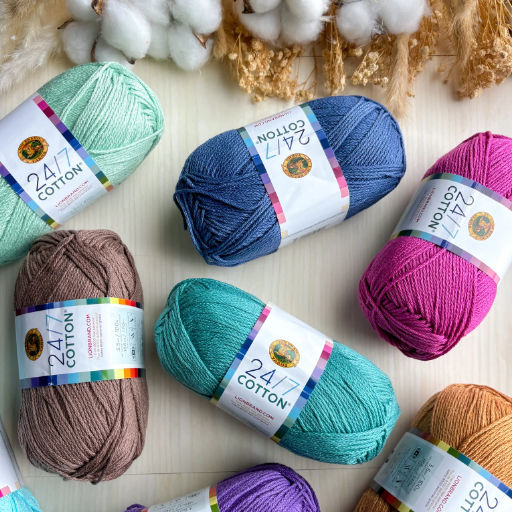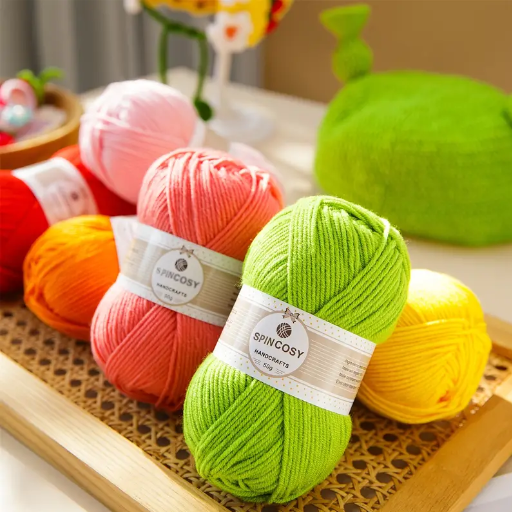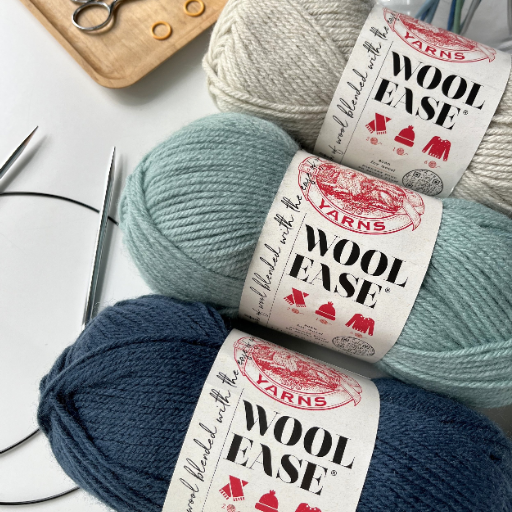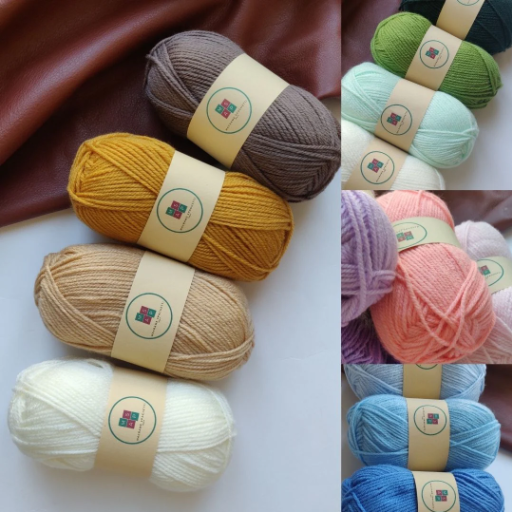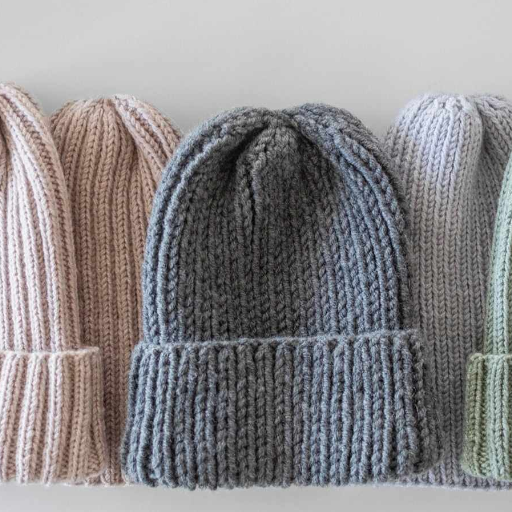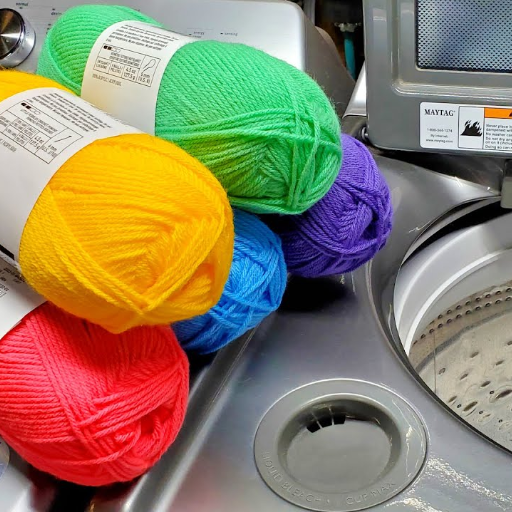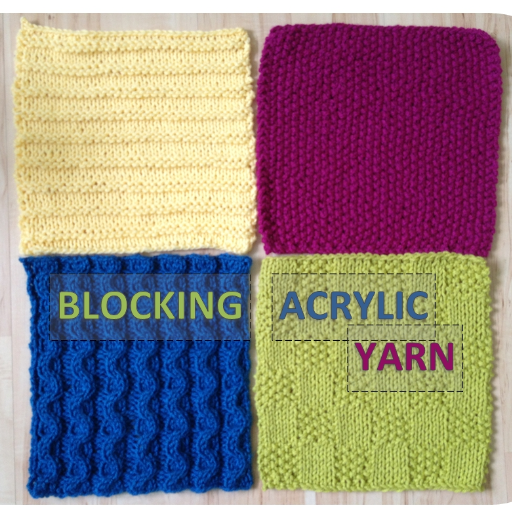Yarn and viscose fabric are well-established products in the textile sector, owing to their ability to adapt to a variety of uses, providing comfort with a touch of elegance. It is a regenerated natural fiber obtained from sources such as wood pulp and is termed as rayon, positioning itself at the cusp of natural and synthetic fabrics. This post serves as everything you need to know about viscose yarn and fabric including the way viscose is manufactured, its advantages and disadvantages as well as the numerous uses it has within the fashion industry and beyond. This article will provide informative information on the issue of viscose in the current market, whether it is to a textiles worker, a global warming crusader, or merely a curious customer looking to make the right choices.
Definition of Viscose Yarn
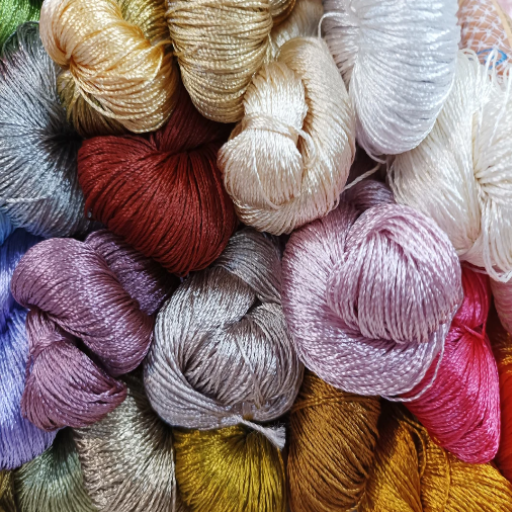
Viscose fiber, also known as rayon, is a type of fiber that is manufactured from cellulose that has been regenerated and is extracted primarily from wood pulp. This is caused by transforming the cell walls of trees into soft breathable and machine-washable yarn with the help of chemicals. Also known as rayon, viscose is highly used in the clothing industry because it possesses the desired characteristics of natural fibers such as cotton, wool, and silk while being cheaper and more available.
What is Viscose Yarn?
Viscose yarn is a fiber-based material that bridges the gap between the natural and the synthetic, providing a solution somewhere in the middle. This is basically formed through the viscose process, where the wood pulp is chemically treated using sodium hydroxide and carbon disulfide to extract the cellulose. Such mixtures are then manipulated into surfaces like heaps of entangled strings or thick yarns. This gave birth to what is known as Viscose at this point, which was first produced in the late 1800s as an attempt to replace the more expensive silk. The textile industry has since progressed to making use of viscose on a large scale.
Viscose, a filament form of rayon, is famous for its flexibility, which is why it is widely used in various areas such as women’s clothes, such as suits and pants, home textiles – for instance, curtains and chair fabric. Also, wet absorption-ability and low density structure for weight are some of the factors which make viscose yarn a suitable antidote for extreme weather conditions when used even there. Moreover, technological evolution has also come in handy to reduce the hazardous effects of viscose manufacture by ‘inserting’ the eco-efficient designs of cellulose extraction from certified forests and recycling systems that minimize the creation of waste.
Characteristics of Viscose Yarn
- Softness and Comfort
Viscose yarn, because of its fuzzy characteristics, is considered by many as being ideal for fabric and clothes which are in direct contact with the body. The soft feel and texture similar to that of natural fibers such as cotton and silk also help in ensuring comfort and the general appeal of the end product.
- Moisture Absorption
Due to its high humidity absorbing nature which may go as high as around 11% regain, viscose yarn facilitates the passage of air, hence ensuring comfort especially in high temperatures or high humidities. Therefore, it is perfectly used in sports wear, summer outfits and household linens.
- Luster and Drapability
Viscose material is easily one of the most notable for its smooth texture and brilliant drape. It is often found in clothes focused on fashion and style as it holds the colors very well thus making it good for clothes that require bright colors.
- Versatility
The construction industry, the paper mill and the cosmetics industry are some of the industry examples where viscose yarn is used in more than one way. It can be blended with other fibers like polyester, cotton or wool to make it stronger or to achieve a particular functionality, for example increasing its elasticity or texture.
- Breathability
It has superior vapor permeability in comparison to synthetic fibers. Therefore, any garment made of viscose yarn will avoid weight and discomfort of such chest weather.
- Biodegradability
Since viscose yarn comes from natural cellulose, it is completely biodegradable if exposed to appropriate factors. Such nature makes this kind of yarn a favorite among those wishing to protect the environment and in industries that are fighting hard to become green.
Viscose vs. Other Yarn Types
|
Parameter |
Viscose Yarn |
Cotton Yarn |
Polyester Yarn |
Wool Yarn |
|---|---|---|---|---|
|
Origin |
Regenerated cellulose from wood pulp |
Natural fiber from cotton plants |
Synthetic polymer fiber |
Natural fiber from sheep’s fleece |
|
Breathability |
Highly breathable |
Excellent breathability |
Low breathability |
Moderate breathability |
|
Moisture Absorption |
Moderate moisture absorption |
Excellent with high absorbency |
Low moisture absorption |
High moisture absorption |
|
Texture |
Soft and smooth |
Soft, slightly textured |
Variable, can feel coarse |
Soft and warm |
|
Eco-Friendliness |
Biodegradable |
Biodegradable |
Non-biodegradable |
Biodegradable |
|
Durability |
Moderate durability |
High durability |
Very high durability |
Moderate durability |
|
Cost |
Affordable |
Slightly higher than viscose |
Low cost |
Expensive |
|
Maintenance |
Easy to maintain |
Easy to maintain |
Requires minimal maintenance |
Requires careful handling |
|
Weather Suitability |
Excellent for warm climates |
Suitable for all seasons |
Ideal for cooler climates |
Perfect for cold weather |
|
Elasticity |
Limited elasticity |
Minimal elasticity |
High elasticity |
Moderate elasticity |
Advantages of Viscose Yarn
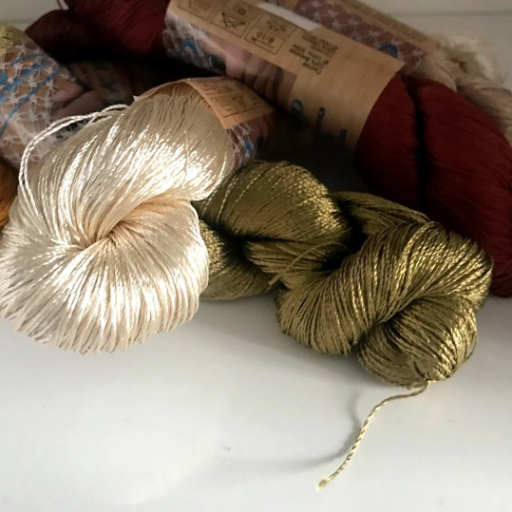
- Moisture Absorption
The line about properties of acetate viscose being good wicking due to its high moisture regain ability whereby index is usually 13% -14% is suitable for swimwear and summertime dresses. Unlike synthetic fibers such as polyester, which have an average of 0.4% moisture regain.
- Soft Texture and Comfort
Viscose yarn has a texture that is as soft as the texture of natural silk, and it is wonderfully soft and lustrous against the skin. This makes garments made of viscose garment and has a luxurious feel, unlike expensive fabrics such as silk, but still has a luxurious feel, making them wearable.
- Versatility and Dye Affinity
Viscose yarn has very good dye-related qualities. Unlike other yarns, it permits the penetration of colors deeply that results in rich attractive colors. It can be accredited to an extensive use of viscose in industries or fields like fashion and home textiles where extensive colorful prints and patterns are required.
- Cost-Effectiveness
Breathability, pliability, and softness are some of the characteristic features also offered by viscose yarn at a lower cost compared to natural fibers like cotton and silk However, these properties have made it very expensive in some of the markets, for example in the luxury sector.
- Eco-Friendly Potential
Though wood pulp-based viscose is not a new concept, the changes in the processes of making viscose as eco-friendly as possible have diminished this worry. When this is taken into consideration and the eco-efficiency deposit of the material, viscose is an ecological solution to unsustainable plastic threads.
- Durability and Strength
Softness and Comfort
In comparison to rayon, cotton, or silk, viscose is more beloved due to its smooth touch – it is so tender that it almost can be mistaken for a natural fabric. The surface property therefore makes the fiber usable for clothing, especially nightwear, linens, bras, panties, among other soft, breathable items in apparel. Moreover, detail of density in the chemical composition of the fiber demonstrates that it has the possibility of effective absorption of the oil from constructed products, including clothing. Thanks to the latest achievements within the sphere of the viscos fiber technology, its tactile features have undergone some improvements, leading to a softer and even higher-quality end product, yet it has been kept within very light and soft parameters. In the manner described, viscos tracks of the consumer fabric, constituting some of the features of the clothing collection, can be worn without resort to the peripheral features of the targeted industry, which is fashion and home textiles.
Breathability and Moisture Absorption
However, despite the ability of viscose fibres to be able to breathe and to absorb sweat, this is due to the special characteristics of their cellulosic structure that allows viscose to comfortably transport purulent agents away from its surface. The fiber wicks and holds liquids in without any discomfort or wet sensations (Shi et al. 2012). Due to the hydrophilic and water-absorbing capacity of viscose, salt absorption and other dermal comfort are increased. However, this property may be used to some extent in providing evaporative cooling to combat the thermoregulation problems of most textiles. Moreover, some modern techniques, such as micro-structuring, can be used, which improve the capillary action of viscose for best results in humid environments. Densification of these properties makes viscose highly applicable across a large variety of products with active wearing elements, such as sports and outdoor clothing.
Affordability and Versatility
Viscose is outstanding not only because of its technical attributes but also because of its level of photo and cost in relation to who is using it. This makes it a good fit across different sectors. Sourcing of viscose is economically efficient as compared to other man-made fibres. Thus, the industry is able to produce reasonable quality products at affordable prices. Viscose is also very practical in blending with other fibres such as cotton, polyester, or elastane. This is how you get strong, stretchy, or even raised textures in the clothes. In addition, it can have the luxury of silk as well as the comfort of wool, making it very popular in fashion, upholstery, and home fabric. With such cost-effective and yet functional benefits, viscose remains a key material for manufacturers as well as for consumers in their demand for new textiles.
Disadvantages of Viscose Yarn
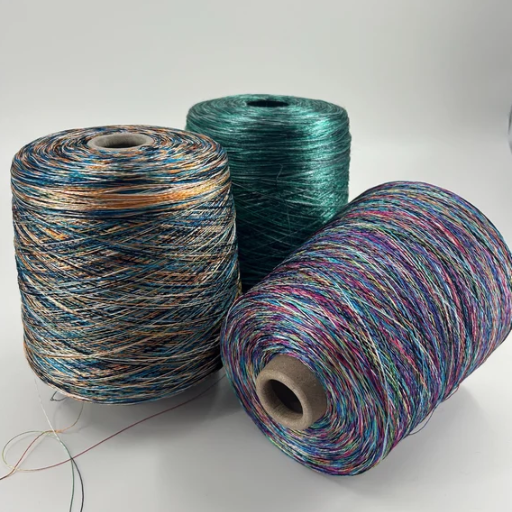
- Environmental Impact
Viscose fabrics undergo a range of chemical treatments also involving large amounts of carbon disulfide, sodium hydroxide, and sulfuric acid. When eliminated irresponsibly, these chemicals pose threats to the environment. Multiple research studies have claimed there are health hazards from dangerous emissions from manufacturing processes in the viscose processing industry ranked among the top five sources of emissions harmful to air and water systems. For instance, in some cases, manufacturing factories have been blamed for discharging toxic substances into water outlets, making it hazardous to the people living in the areas and the environment as well.
- Weakness in Wet Conditions
Viscose fiber has a very high tensile strength, except when it is wet. The tensile strength of the fiber, which is mainly made from depleted wood pulp which is chemically processed, reduces greatly up to 40%. If not all, a great majority of luxury casual fashion clothes and children’s products containing viscose may not withstand a running water test due to its hydrophilic nature and it will get easily damaged or lose its proper shape during wear and cleaning.
- Low Resilience
While synthetic fibers like polyester and nylon can stretch back with their strong surfaces, viscose does not. This limited stretch capability virtually gives shape to nuisance and wrinkles the fabric again, which were aggressively stretch in the first place. This often results in outfits that starves shape that fits properly and even looks good as intended and designed.
- Susceptibility to Pilling and Abrasion
Viscose material with its average lifespan easily pills and particulates at the surface, particularly in abundant friction zones. Studies found out that when a test is made on a fabric, for example, the abrasion level of viscose yarn is low when compared to other natural fibers such as cotton or synthetic fibers like polyester. Thus, such fiber is not frequently used for costumes geared at higher wear or other applications requiring service for longer periods.
- Moisture Absorption and Mildew Growth
The strength of viscose is also its trade-off as it can also absorb moisture but it causes problems such as mildew and fungi when supporting serious humidity conditions. In such cases, the material might suffer from bad smells, discolouration, and gradual deterioration of material properties due to improper treatment of the fabric over time.
- Energy-Intensive Production Process
Tendency to Wrinkle
Because viscose is semi-synthetic, the fabric creases a lot for it has low stretch elasticity. This is mainly because of the poor elastic recovery of the cellulose fibers in the material, as evidenced in the two crease specs of the viscose-made sample. It is worth noting that when subjected to pressure or distortion, the fiber takes a definite shape and retains fold lines. The research has demonstrated that the clothes from viscose usually need to be ironed or brought to a steam cleaner in order to present a smooth appearance, meaning that more time and energy are spent on such basic activities. This feature also reduces the application of the fabric in terms of products where resistance to creasing is of utmost importance, such as travel attire or upholstery. However, in certain circumstances, the development of textile treatments is done in order to avoid this problem, such as the addition of quilting to the viscose fabric or the use of stretch fabrics in conjunction with all viscose fibres.
Susceptibility to Shrinkage
Viscose as a fabric is famous for one more particular characteristic, which is the ability to lose its shape; such problems are particularly vivid in the presence of water exposure and under laundering conditions. Directly, this “shrinkage” attribute can be seen as the fibres are hydrophilic, and if their water holding property changes, so does the size of the fibre. In some cases, viscose is known to shrink by up to 10 percent, especially if improper washing is done, like using warm or hot water or using fast cycles. To prevent this, labels usually advise hand washing or using the gentle option on the washing machines. They also advise against shrinking the fabrics in the dryer and instead recommend air drying to maintain the size of the fabric. Furthermore, in order to combat the excess shrinkage and prolong the life of the fabric, it is commonplace for cloth manufacturers to use artificial fibers such as polyester and employ the use of advanced technologies with a pre-shrinking of fabric operations.
Environmental Concerns
Common Uses of Viscose Yarn
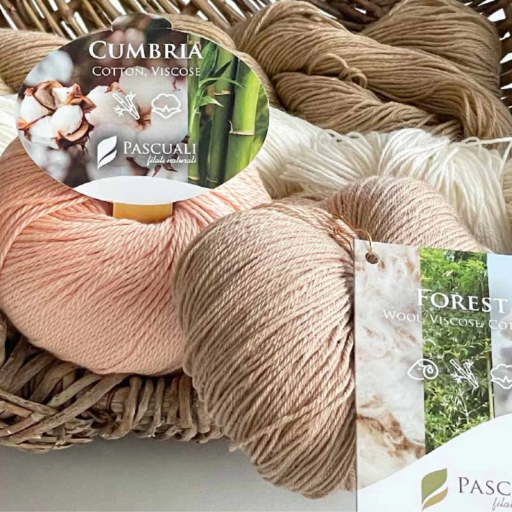
- Apparel and Textiles
Materials like Viscose yarn are primarily intended for the production of textiles and clothes, which include the following: suits, blazers, shirts, skirts, and robes on account of its peculiar qualities of being thin and smooth in contact with the human skin. Its ability to copy the exact appearance of such luxurious natural fibers as silk makes it readily applicable in the making of better quality designs. There are also a series of details about 79% of apparel grade regenerated fibers is viscose fibers.
- Home Furnishings
Viscose yarn is soft and lustrous due to which it is used with appreciation within interior décor items like furniture, fabrics, curtains, building components, carpets and bed linens, as this is where these properties are desired. This further contains the application of decorative softer furnishings which are comforting and enhancing at the same time. Viscose fibers are used for 15% of all textiles in furnishing worldwide.
- Industrial Applications
For instance, the development of technical textiles involves the production of viscose. Papers, non-wove are one of them. Eucalyptus viscose is also used for the tie industry and the life expectancy and bounce of the tires are quite impressive. After that, high tenacity is applied on the viscose yarn wraps for the making of the tire cord to be higher than the tire cord alone and consequently is used extensively in making tires especially those meant for use on the vehicles.
- Hygiene and Medical Products
Viscose yarn tends towards disposable products as one of its other good properties is the high absorbability of the fiber. Examples of gauze, wipes, and hygienic pads are made of nonwovens manufactured from the pollutant prevention. About 60% of the global production of viscose fiber in non-woven fabric category is in other terms used in the hygiene application.
- Crafts and Accessories
There are many other uses of viscose yarn such as in arts and crafts or in making knitted, been woven and crocheted. The reason for this as the yarn is said to have a very silk like finish and is available in many different bright colors making it possible for even a scarf or a shawl or any other hand crafts to be made in the process.
- Blended Materials
Such is the case for example as we would normally think less of viscose yarn in isolation because of the other basins would prefer weaving it in a ratio of other yarn types such as cotton, polyester or wool particularly for the textile products that blend these fibers together and produce various effects in the fabric such as enhancing the strength, form and absorption levels. Such yarns are widely used in the manufacture of garment fabrics for sportswear and activewear modes.
Fashion Industry Applications
For the above reasons, viscose is a very useful material in the fashion industry because it is an all-purpose fiber that can replicate the appearance and feel of fibers having multi-textural qualities like silk and cotton. An example of such an application is the creation of summer clothes that are lightweight and extremely breathable. Viscose dresses, tops, and skirts, in many cases, are not only extremely fashionable but they also offer an added advantage of excellent draping and softness, which allows for easy movement. Lastly, viscose finds its use in digital printing techniques for its ability to absorb dyes, enabling one to come up with magnificent photographs in preference to screen printing. The data represented here shows that the demand for products made of viscose cloth is also expected to grow as the issues of biodegradable fabrics and sustainable fabrics are a foremost need in the fashion industry. This underscores viscose as an important resource in fashionable yet environmentally friendly clothing.
Home Textiles
Home textiles are another significant sector where Viscose is playing a motivating role because of its characteristics, such as softness, breathability, and limitless uses. It is popular in items such as bedspreads, curtains, upholstery, and towels since it tends to offer ease of use, beauty, and comfort as well as longer life. All the above are areas that are expected to dominate the global home textiles market in the future, since a constant compound annual growth rate is anticipated, consequent upon consumers’ appeal for better aesthetics as well as eco-friendly and high-performance materials. Viscose works perfectly in these circumstances as it combines convenience and eco-friendliness, making it the top choice for the new generation of eco-conscious shoppers. Last advances, such as green dying and other sustainable ways of dyeing, as well as closed-loop production, suggest that viscose products are positive and can be used with minimal environmental implications in the production of home textiles.
Crafting Projects
Viscose is critical in today’s trending craft projects because of its adaptable nature and preference. In particular, it suits perfectly for arts such as macramé, weaving, and stitching since the powdery feel and the blooming of dyes give the artist room for very high and detailed work. In addition, the ease of blending viscose with other materials like cotton, polyester and jute allows the artists to blend specific textures, weights, and finishes as per enclosed requirements. Viscose is preferred in art making today, as more and more people continue to make craft items that support the sale of eco-friendly goods and are most sustainable. Viscose is a perfect solution that will not allow it to fall from both professional and amateur craft activities, as the progress is enhancing the durability and performance of the viscose.
Caring for Viscose Yarn
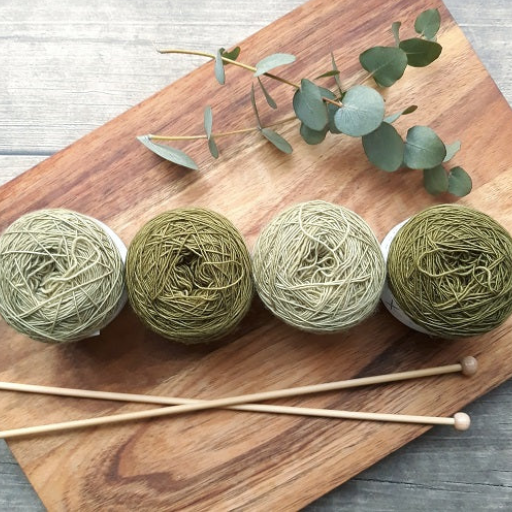
The essential maintenance of the viscose thread quality is a practice that every artist needs to be aware of. There need to be a follow-up on the instructions below:
- Washing: Hand clean the projects made of viscose thread in lukewarm water using a suitable detergent. Do not wind or twist the yarn excessively so as not to damage the fibres.
- Drying: Whenever drying the items, ensure to lay them on a dry towel and let them dry naturally. Shun sunlight and excessive heat as they are known to cause shrinkages and damages.
- Storage: Keep viscose yarns in a dark, dry environment, away from contact with sunlight and moisture to prevent discolouration or mildew.
In doing this, you should not lose the texture, strength, and look of the products you have made out of viscose threads upon following these steps.
Washing Tips
- Cool Water Works Best For viscose yarn knitted garments wash them in cold water which is ideally 60°F (15°C) to 80°F (27°C). This will prevent damage to the fibers which will result in shrinkage or misshaping.
- Go For Fine Detergents Instead: Use pH-neutral or fine detergents and stay away from rough detergents as the population can cause damages to the fibers. Completely avoid any kind of bleach or substances that contain chlorine.
- Do Hand Washes Occasionally: It is best not to machine wash unless it is on a delicate or gentle cycle. Even in such cases, hand washing is still the best method as it prolongs the life of the yarn.
- Be Gentle: While washing, do not rub or scrub the clothing too much or harshly. Hold the fabric above the soapy water, gently swirling it in the water in order to remove dirt and oil and then stop.
- Rinse Well: Keep rinsing the item in water swirling the garments in clean water until all traces of detergent are removed. Detergent residue left on the scoured fabric makes the fabric stiff by hardening the fibers.
- Do Not Twist or Squeeze: Lastly, after wringing the fabric out, press out the excess water, but do not squeeze it too tightly to avoid excessively damaging the fabric.
Drying Recommendations
- Line Drying: For delicate fabrics air drying is the most recommended way of preservation. Place the item flat out on the bed or a dry towel in a good place with some flow of air or a few dry place to prevent it from direct sunlight as this could cause color fading and weakening of fabrics; and keep turning the fabric so that both sides can dry equally.
- Avoid Blasting Heat: Avoid the heat from an oven like source be it fireplace, a heater or even the sun since with time fabrics tend to. Expanding causing shrinkage.
- Usage of Racks for Drying: Drying fabrics, especially light textiles, or garments can be done dryer-racks. Make sure the racks are evenly spaced or well spaced so there is no one place that has moisture all over the fabric.
- Tumble Drying (if allowed): For clothing that allows tumble drying and it is labeled so, use tumbler provided in the drying room for all the light and gentle cycles. Warm roller balls can help in quick drying and reduction effectively. Heat will still be used but not too much to extend the life of the cloth.
Storage Best Practices
Storage of textiles and clothing is very important for their preservation and the improvement of their life as it prevents them from environmental deterioration, attacks of pests, and also plays a role in preventing the clothes from becoming worn. Storing objects in cold and well-ventilated places that are completely dry will help prevent moulding and bad smells which is produced as a result of moisture. For such storage, use cotton clothes covers or acid-free tissue to ensure proper air circulation without removing moisture. Plastics are illegal because they overheat the garments and trigger the evaporation of moisture from the garment, which then causes the fabric to wear out or color the garment
Reference Sources
1. Abrasion Behaviour of Wool-Viscose Hand Tufted Carpets Using Response Surface Methodology: The study explored the abrasion resistance of hand-tufted carpets made with varying blends of viscose and wool. Higher viscose content, lower pile height, and lower pile density resulted in reduced abrasion loss. The abrasion behavior was modeled using the Box-Behnken design, achieving a high prediction accuracy (R² = 0.997).
2. A Study on the Circular Knitted Fabrics with Cosmetic Functions: Developed multi-functional circular knitted fabrics incorporating cooling collagen and nylon 6. The fabrics demonstrated properties like UV protection, moisture retention, and cooling effects, making them suitable for spring and summer wear. Functional properties such as water absorption, air permeability, and thermal imaging were tested and met international standards for women’s casual and underwear.
3. Textile Fabric’s and Dyes: Provided a comprehensive overview of natural and synthetic textile fabrics, including viscose rayon. Discussed the interaction of dyes with various fabrics, highlighting the environmental impact of synthetic dyes. Emphasized the importance of natural dyes for eco-friendly textile production.
Frequently Asked Questions (FAQs)
Q: What is viscose fabric made from?
A: Viscose fabric is made from cellulose, which is derived from natural sources like wood pulp. The production process involves dissolving cellulose in a solvent to create a viscous solution that can be spun into yarn. This makes viscose a semi-synthetic fiber, as it combines natural materials with synthetic processes. Many consumers appreciate that viscose is biodegradable, making it an environmentally friendly alternative to fully synthetic fibers like polyester. The use of wood in viscose production also ties it to sustainable forestry practices when sourced responsibly.
Q: How does the feel of viscose compare to other fabrics?
A: Viscose is often compared to silk due to its smooth and soft texture, making it a popular choice for garments such as shirts and dresses. The properties of viscose allow it to drape beautifully, giving it a luxurious feel. It also has a breathable quality, which makes it comfortable to wear in warmer climates. When comparing viscose to cotton, many find that viscose absorbs moisture better, adding to its comfort level. This unique feel makes viscose a versatile fabric for a variety of clothing items.
Q: What are the different types of viscose yarn?
A: There are several types of viscose yarn available, including conventional viscose and those blended with other fibers like cotton or polyester. Each type offers unique properties that can suit different projects. For example, rayon and viscose blends may enhance durability while maintaining the soft feel characteristic of pure viscose. Quality viscose yarn can be found in varying thicknesses, which affects the final texture of the finished product. Understanding these different types of viscose yarn will help you choose viscose that meets your project’s specific needs.
Q: How do you wash viscose garments?
A: Washing viscose requires special care to maintain its structure and feel. It is recommended to wash your viscose items in cold water on a gentle cycle to prevent damage. Avoid using harsh detergents or bleach, as these can degrade the fabric. After washing, it’s best to air dry your viscose garments instead of using a dryer, which can lead to shrinkage. If necessary, you can iron viscose on a low setting, ensuring that the fabric remains looking fresh and vibrant. Proper care will extend the lifespan of your viscose creations.
Q: Why should I choose viscose for my project?
A: Choosing viscose for your project offers numerous benefits, including its softness, breathability, and drape. Viscose yarn is known for its ability to absorb moisture, which enhances comfort in clothing. It can be used to create a variety of items, from lightweight summer dresses to cozy winter scarves. Additionally, the versatility of viscose allows it to blend well with other fibers, expanding your creative possibilities. By using this type of yarn, you’re not just selecting a beautiful fabric; you’re also opting for an environmentally friendly choice that is biodegradable.








